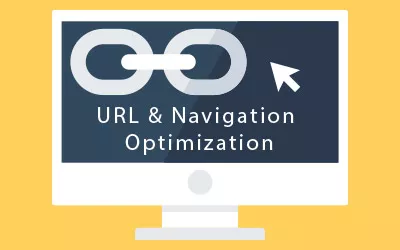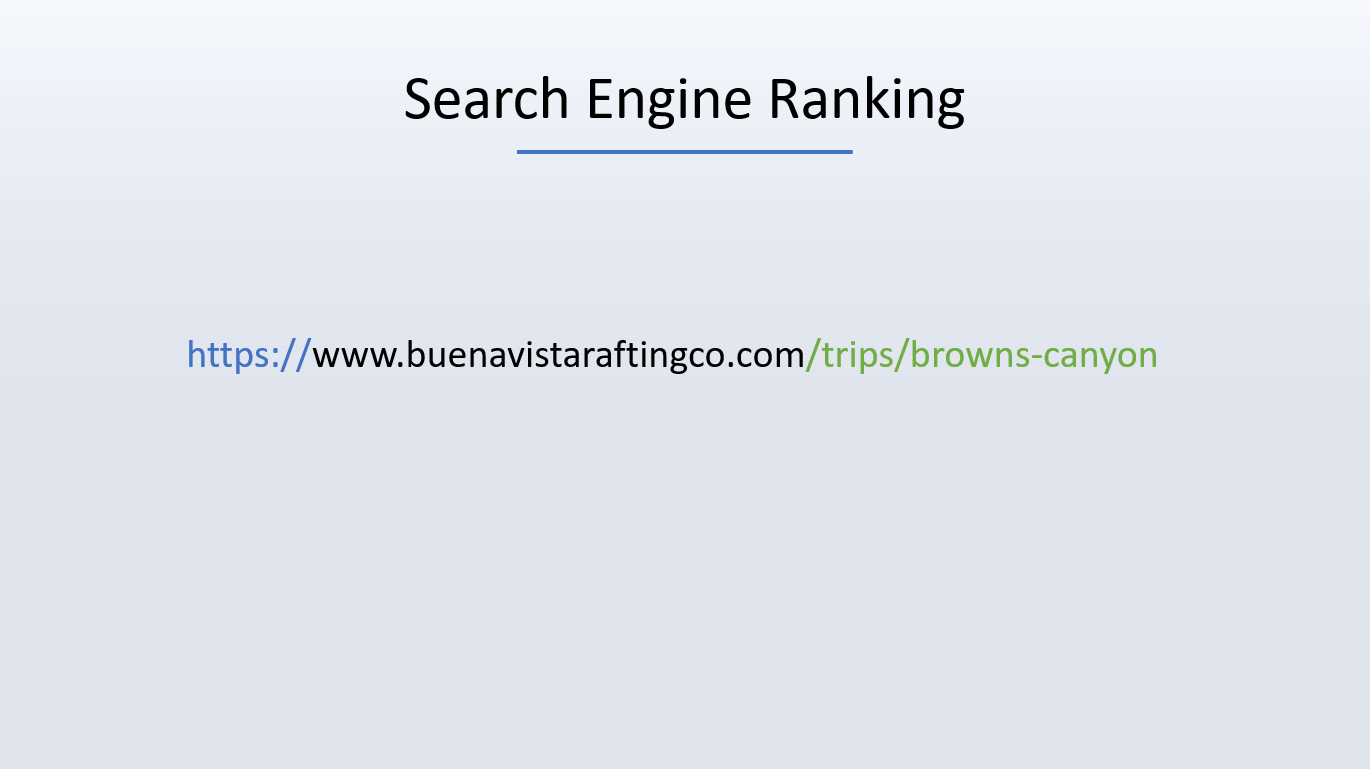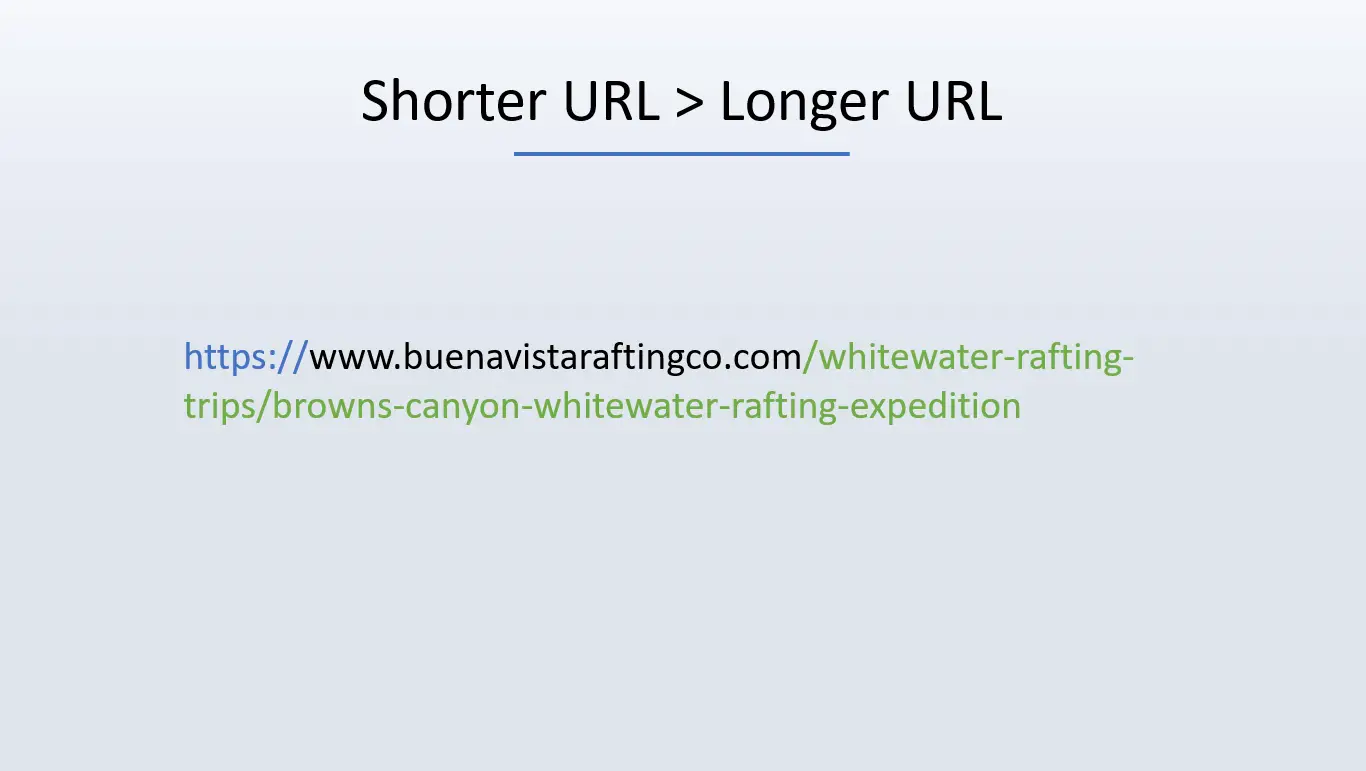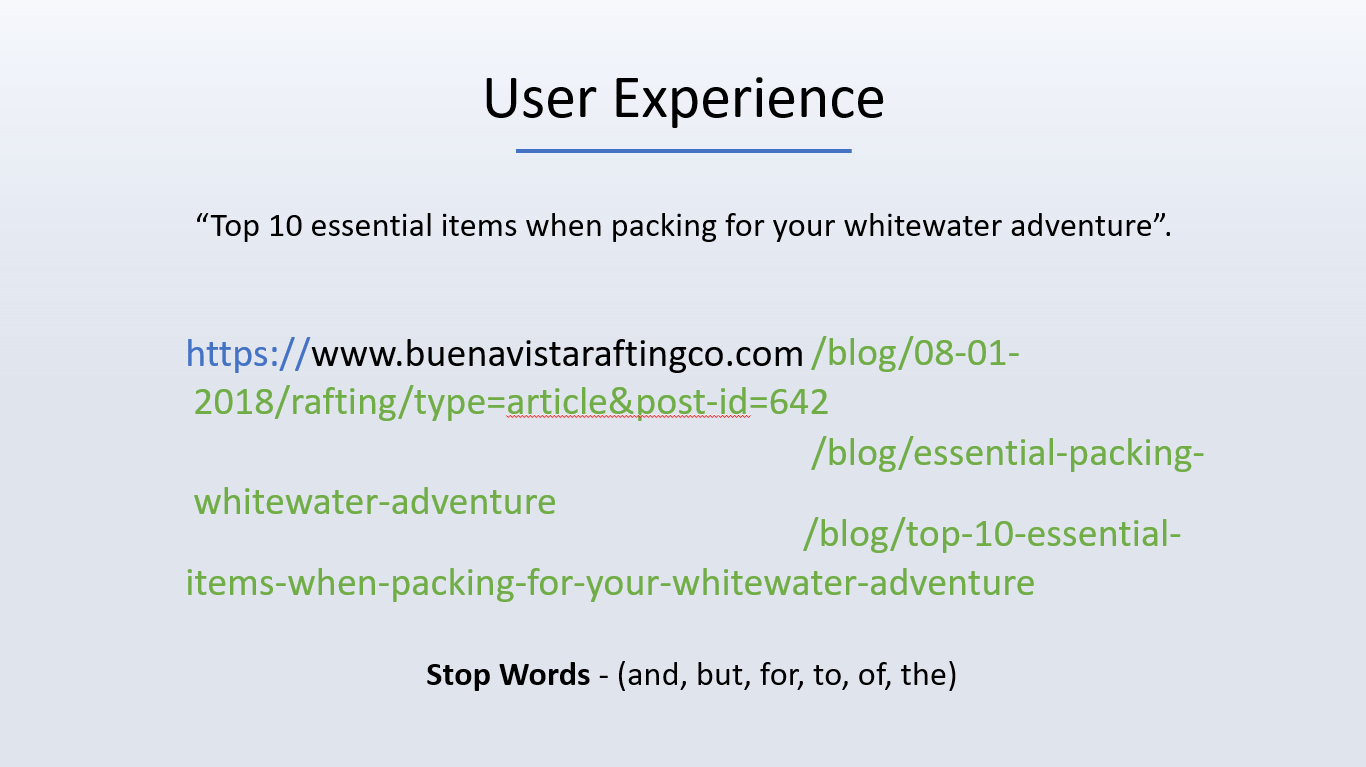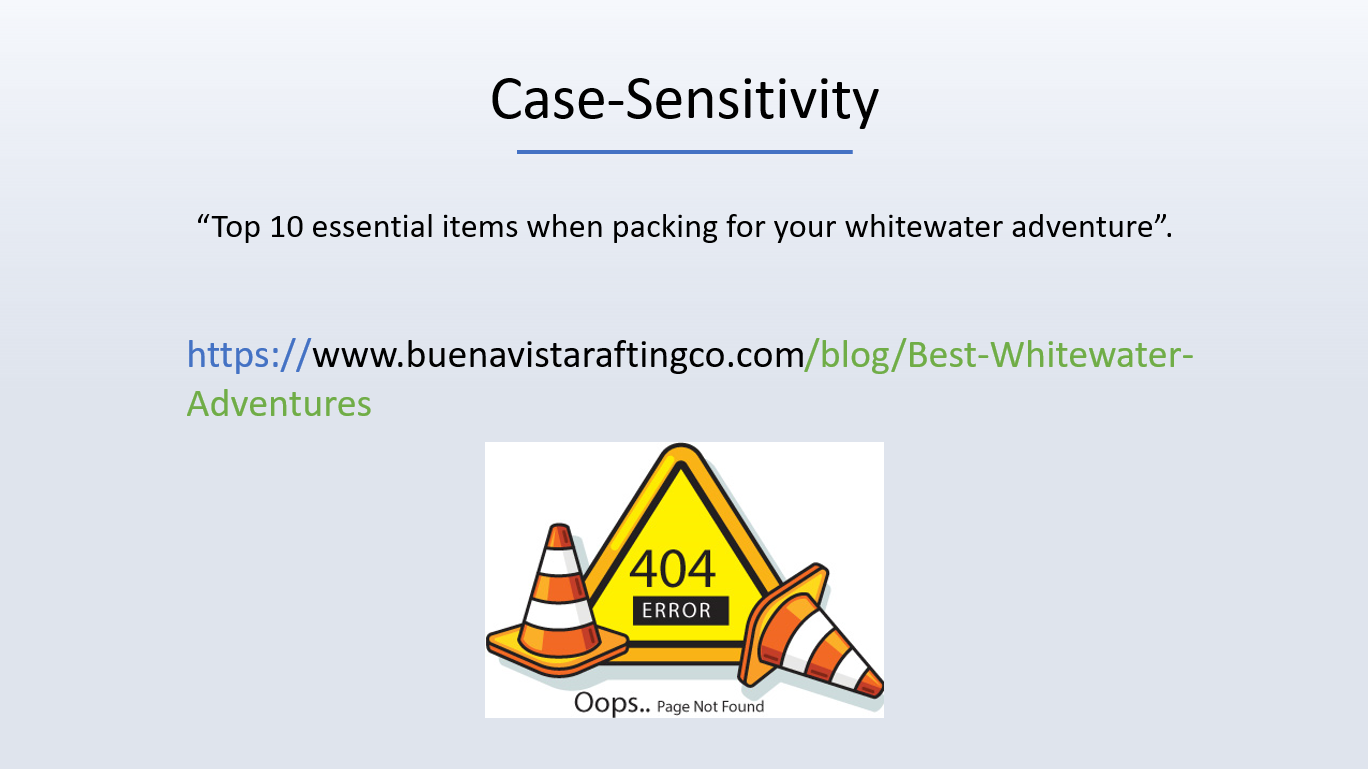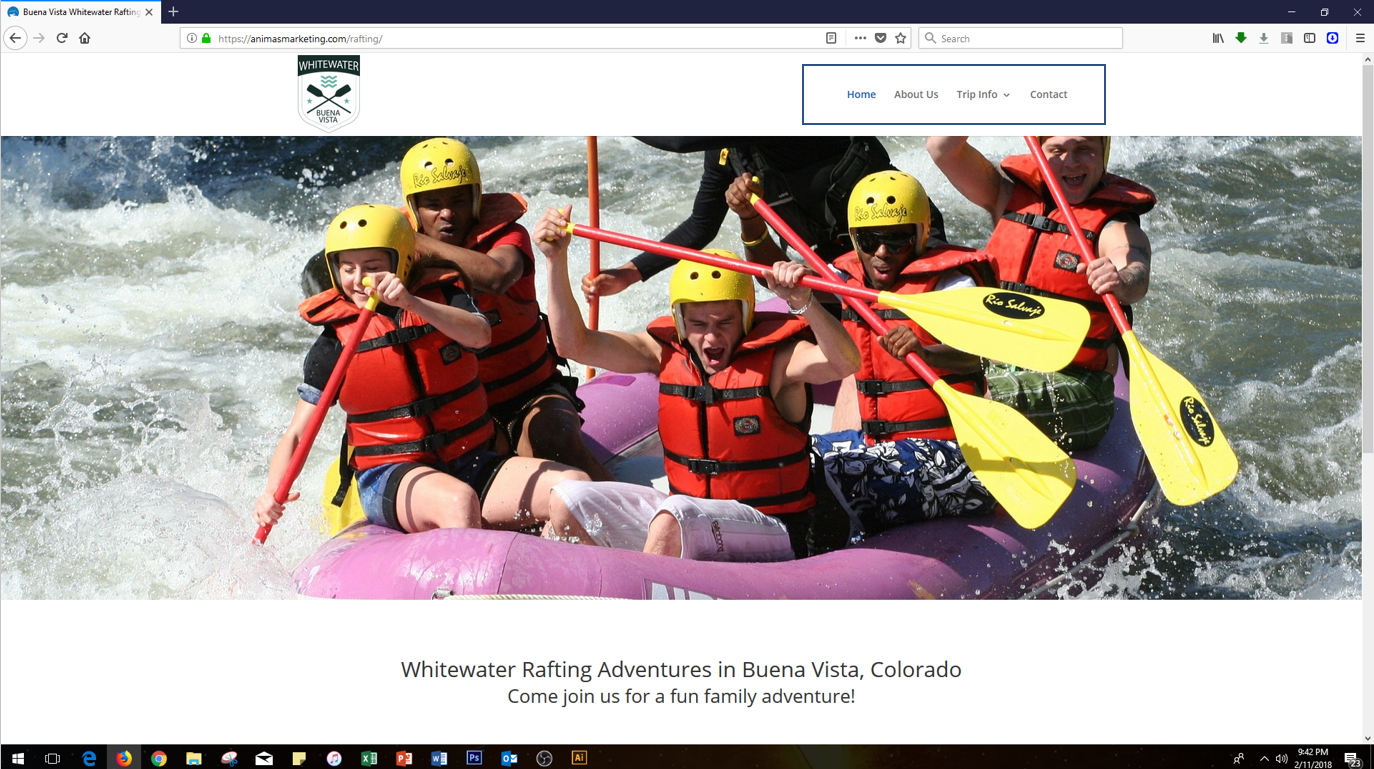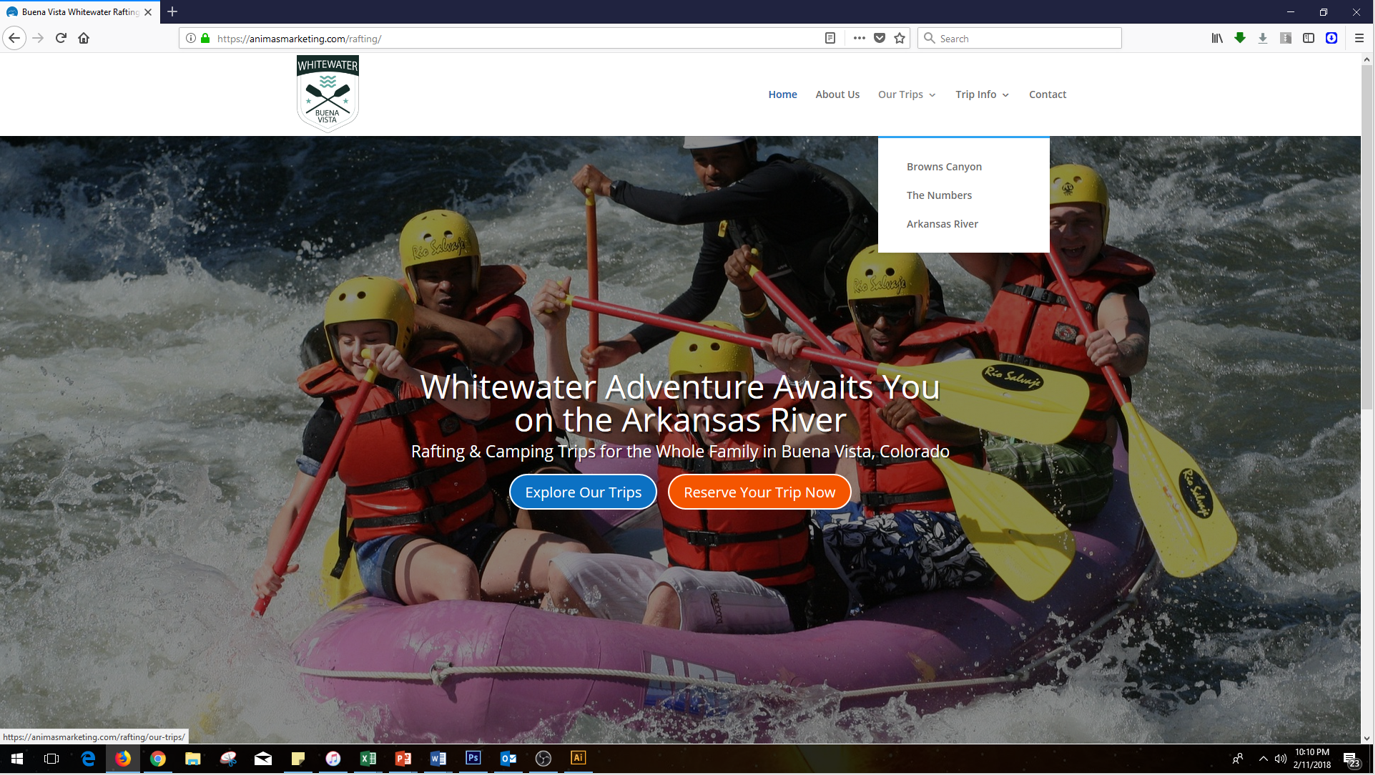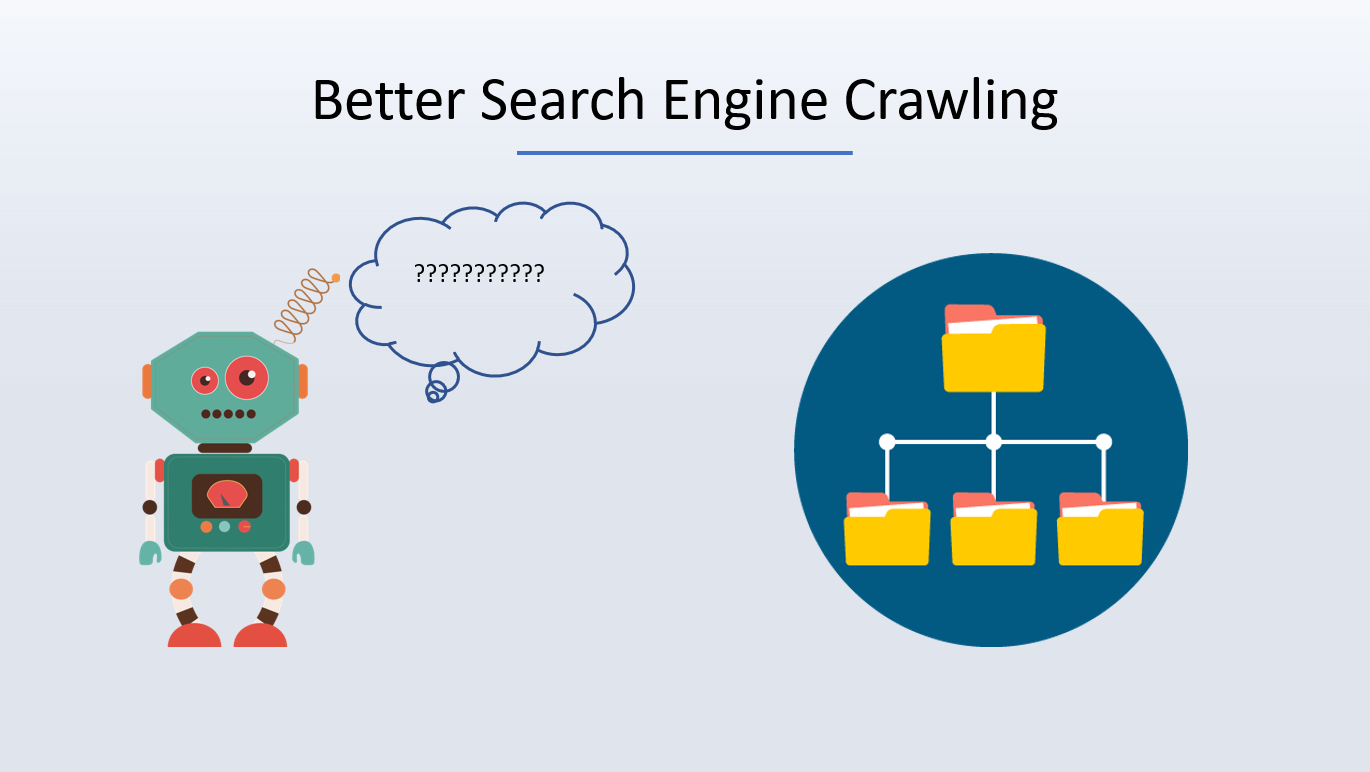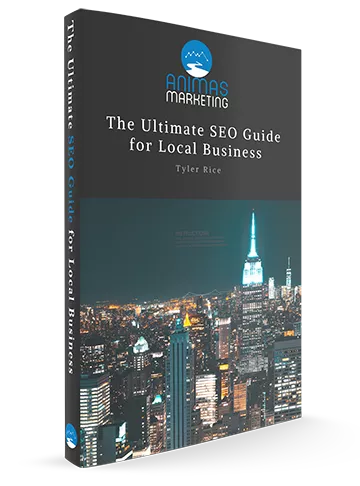Best URL Optimization & Navigational Structure for SEO
What exactly is a URL?
A URL is the text and file structure that makes up a webpage’s path. This is the human-readable path that is created to replace the IP address numbers that computers use to communicate with servers.

The URL is made of three parts: The Protocol, the Domain name, and the path.
Think of the protocol as an indicator of how a browser should view information at the specified path. The domain name is the specific location of a given path to a webpage. This can include .com, .edu, .org, and much more. The path makes up the structure of where a webpage resides on a domain name.
Best Practices when Optimizing URLs
1. Search Engine Ranking
While having keywords in the URL is not a major ranking factor, it does provide influence to search engines when ranking a website.
Looking at our Buena Vista Whitewater rafting example, we can see how some of these keywords can be used in the URL. While the domain should in most cases include the brand name, it can also commonly be found to have relevant keywords in it.
In this example, we have the domain “buenavistaraftingco.com” which works for our fictional business since it has the keywords “Buena Vista” and “rafting” in it and is also the brand name of the business.
The next part of the path has the keyword “trips” while the current webpage has the keyword “Browns Canyon”. This webpage address leads us to a page that covers the Browns Canyon river trip so having this structure is not only relevant with keywords but is also relevant to a user. While adding keywords to URL is great for an additional ranking factor, is important to keep webpage URLs short and simple.
In this example, we added in more keywords to the webpage path. While it may seem like adding in the additional terms could help with rankings, it makes it more difficult for the user to read and search engines may negatively impact your website for trying to keyword-stuff the URL. Remember, you want to keep the user experience in mind when working with on-page optimization.
Let’s look at an example of a blog post titled, “Top 10 essential items when packing for your whitewater adventure”.
After creating the post, you might come across a path that looks like this. Not only is there a missed opportunity for adding keywords, but this is not very user-friendly. In fact, it is junky and ugly looking.
If a user comes across this webpage path, they might not have any clue to what the content could be. This type of path can be created for a new page depending on many factors including how your permalinks, categories, or tags are set up.
But that’s ok!
We can fix this path up by changing some of those settings and rewriting the path. Even if you have your navigation structure set up to your liking, you may end up with a webpage path like this when uploading this article with the title provided. Like the previous example, this path is too wordy and may deter a searcher from viewing your page. Let’s try and shorten the URL down while trying to remain relevant for a user.
In this example, we choose the path, “essential-packing-whitewater-adventure”.
Not only did we remove unnecessary words, but we also removed the stop words.Stop words are the most commonly used words in the English language and are often ignored by search engines. These can include the words and, but, for, to, of, the, and many more. While it may not have any effect on SEO to remove these words, it makes the URL shorter and clearer for a user and can result in a higher click-through rate.
Finally, make sure to keep in mind case-sensitivity.
Case Sensitivity in URLs
Try and avoid using capitalization in your URLs so you do not end up with any 404 errors (which would be the error of a page not being found). While there is a decent chance that case-sensitivity will not be an issue when directing to a webpage, it is best practice to avoid those issues altogether.
Now that we have uncovered some common practices when optimizing URLs for SEO, let’s look at how the navigational structure can play a role in search engine rankings.
Site Navigation is too often overlooked when a business is optimizing their website even though it is a crucial building block to any SEO strategy. Let’s look at why site structure is essential to SEO.
First off, having a good site structure is necessary for a great user experience. We all know how important it can be to have a superior design to a website, but it is equally important to deliver a relevant and logical site structure. While this is not a direct ranking factor for SEO, it will greatly impact the ranking factors determined by user experience. If a user cannot find what they are looking for within seconds or becomes confused with the site structure, they will simply leave and look for a website that can help them. This can lead to high bounce rates and search engines will see this as a negative ranking factor.
Once again, the bounce rate is when a user arrives at your website and has no interaction with it and leaves. Let’s see how poor site structure can lead to a high bounce rate.
For example, a user arrives at the home page of our rafting company to see how much it would cost to take a trip through the popular Browns Canyon. A common goal such as this should be able to be easily found without a user having to even scroll on the current page. Within arriving on the homepage, the user cannot find information on either the Browns Canyon trip or what sort of pricing the company offers.
The main menu of “Home”, “About”, “Trip Info”, and “Contact”, does not fulfill the immediate need of the searcher. Since the user cannot find the information they are seeking, they leave back to the search engine to click on the next result and we just lost a potential customer. Let’s look at a better example of site navigation for a better user experience.
This time, we have added in the “Our Trips” section to the main menu along with a drop-down submenu of the most popular trips. Now the user doesn’t have to search throughout the website for the goal of obtaining information on the Browns Canyon river trip.
Maybe an even better example of the navigation is to add some call-to-action buttons over the image. This way, the user has another clear idea of how to view their trips and the customer may also book the river trip right from the homepage.Now that our whitewater rafting business has a better navigation from the homepage, our bounce rate will decrease, and the time spent on the website can increase due to a better customer interaction experience.
Another reason that site structure is essential to SEO is the automatic placement of site links. Sitelinks are the additional page links listed underneath your homepage that allow a user to quickly navigate to a more relevant page on your site.
These site links are an incredible SEO advantage. Not only do they take up a sizable portion of the search results screen, but they increase the navigation visibility on your site, allow users to be directed to more relevant information, and they increase your brand’s reputation. Also, your site seems more trustworthy and when users can immediately gain the relevant page from the search engine results, that will increase click-through-rates and shorten the sales journey for the user.
Here’s the thing. You cannot submit site links to search engines such as Google. It is awarded to you from when google spiders crawl through your navigational structure and find it to be logical and relevant. If a search engine spider finds your navigational structure to be of poor quality, you can be sure that site links will not appear in the search engine results.Therefore, your site structure should be convenient to crawl for search engine spiders.
With that, we arrive at the next reason of why navigation structure is important for SEO.
Strong Site Navigational Structure
A strong site structure means better crawling from search engines. While a sitemap is essential to having your site structure crawled by search engines, if your navigation is not clear or is poor quality, then the search engine spiders may not index or discover all of your pages.
To recap, when naming your URLs is to goo practice to use keywords while not overdoing it, keep them short and relevant, build them for the user experience, and keep the URLs lower-case. For navigational structure, you also want to build it for the best customer interaction, keep it simple, and keep the most important pages closer to the root domain.
Remember, while website structure is not a direct SEO ranking factor, it can strongly affect customer interaction which is an essential element for search engines. When customers are finding your website relevant and easy to navigate, your site will be seen as authoritative and trustworthy which will improve your search engine rankings.
Looking to learn more about SEO? Download our FREE eBook guide below.
Download the Ultimate Guide for Local Business
Enjoy this free resource from us to help you learn the essential techniques to boost your rankings on search engines.
Is Your Business Being Found Online?

Free Digital Marketing Report ($150 Value)
![]() Want to know how your business stacks up against the competition?
Want to know how your business stacks up against the competition?
Need Marketing Help?
If you want assistance with marketing strategies to grow your business, then let’s talk.

